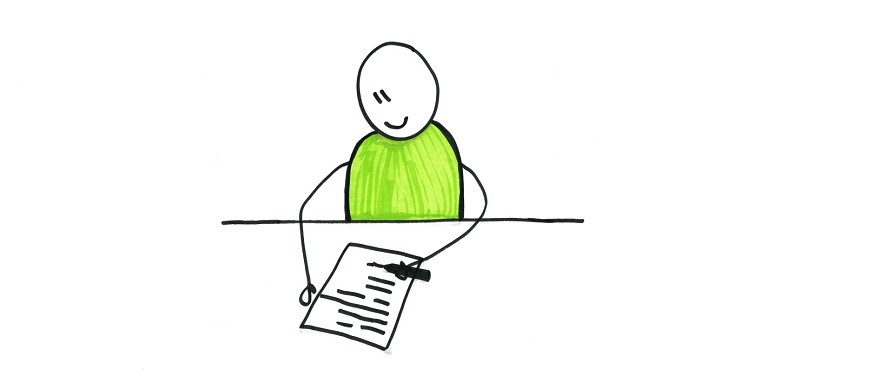Read, listen, see and learn about taking notes
Short, accurate notes
The purpose of taking notes is partly that you must have a reference work to use when studying for the exam, and partly the purpose is that you remember the curriculum better if you have taken notes on an ongoing basis. Many students write very long notes because they are afraid to forget anything. But that's not really the best way to remember. On the other hand, it is better to:
- Keep your notes short and accurate. That way, you don't spend too much time writing notes and you can quickly orient yourself in your notes.
- Try to write your notes in the same short and precise style that you can find in an encyclopedia.
- Write so much that your notes make sense, but at the same time so little that it does not takes your focus away too long from teaching or reading.
Find the technique that suits you
There are a lot of different note techniques you can use as a student. However, the most important thing is that you choose the technique that suits you. Below you can see our suggestions for note techniques.
You can use concept cards. See a PDF with the Concept card here.
You can use the Cornell method. See a PDF with the Cornell method here.
You can use the "House" method. See a word file with The House here. And a completed example of the House here.
Alternative note techniques
There are many other ways to take notes. For example, many students use Onenote, which makes it very easy to look up the notes.
Another option is to draw your notes, it is another way of remembering, which for some strengthens memory.
You can also think about whether you might have to voice record your notes. Voice recording your notes goes much faster and is a good way to quickly check if you have gaps in your knowledge.
When taking notes for text, you should:
- Finish an entire paragraph before taking notes
- Have understood what was the text's main point is, and only take notes of this
- Summarize the main points and not be afraid to forget insignificant details
When taking notes during lectures, you should:
- Have an effective note technique so you don't miss too much of the teaching when taking notes.
- Use abbreviations and symbols that you know in advance what means. Known examples of this are replacing "and" with "+" or "it leads to..." with "à".
- Take cue notes for the teaching to write it in more detail immediately afterwards.
